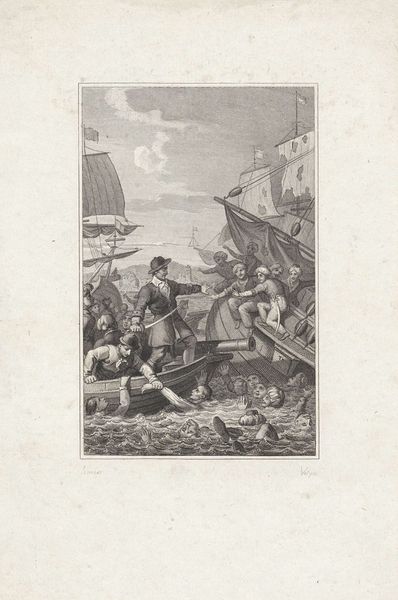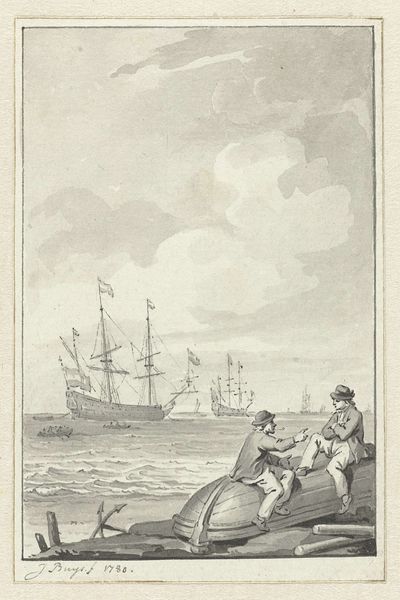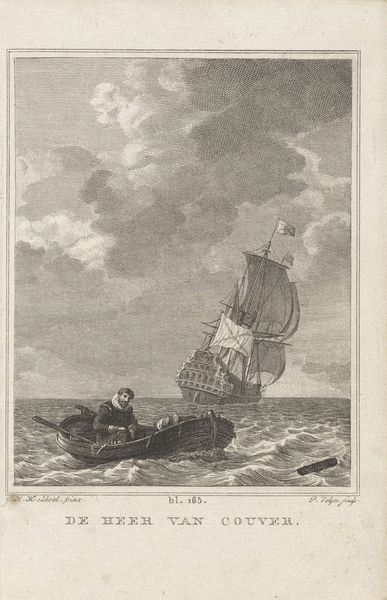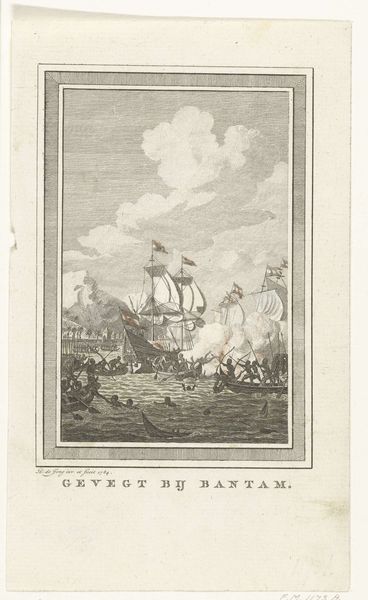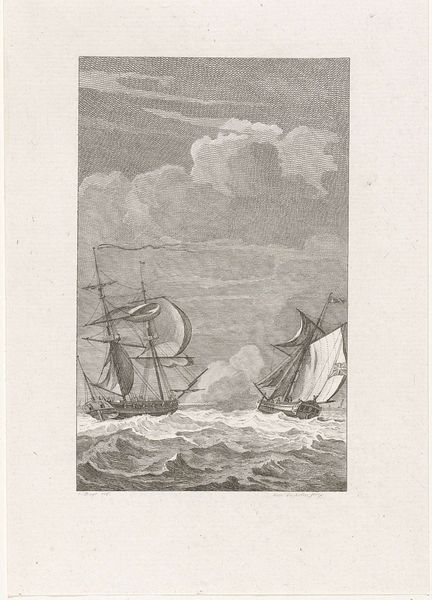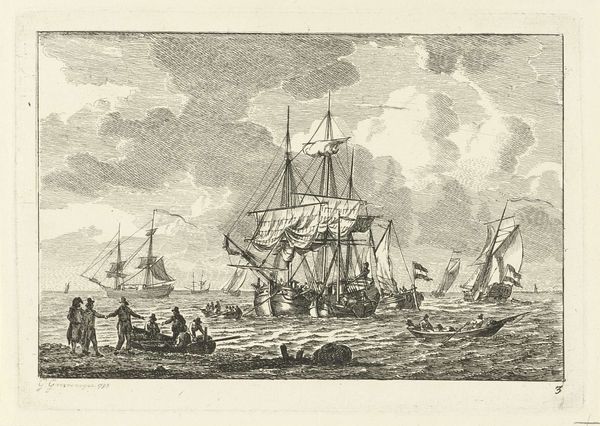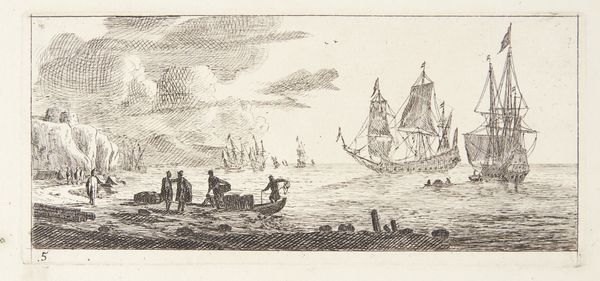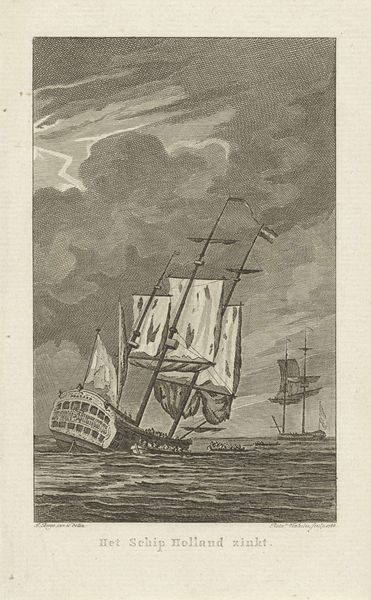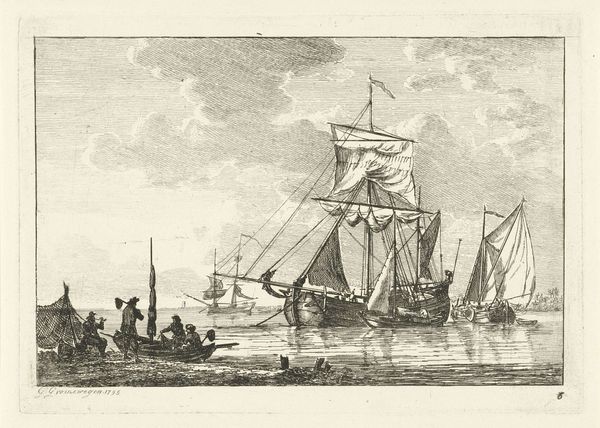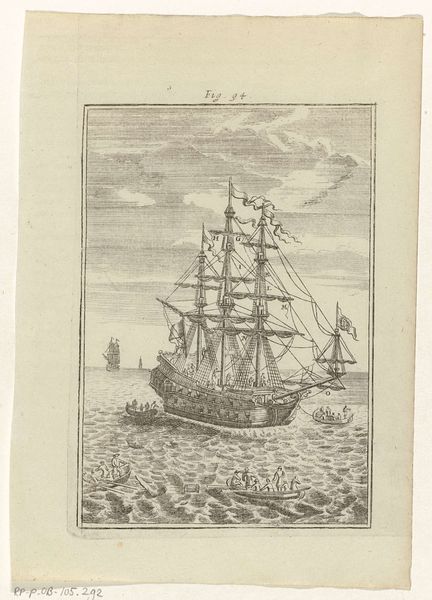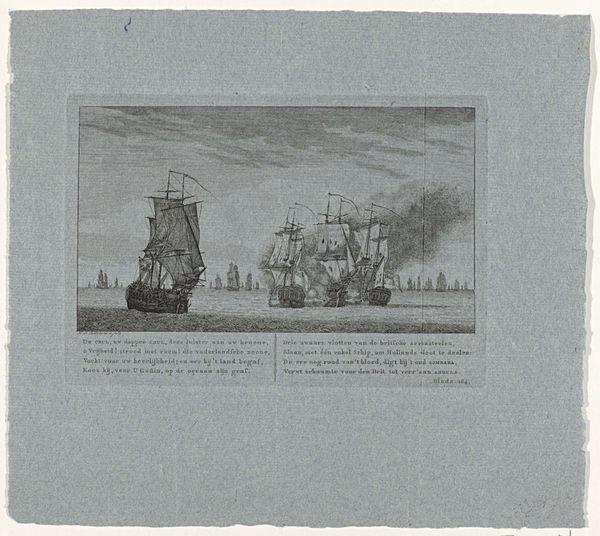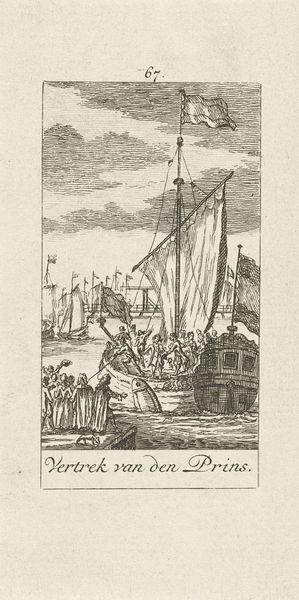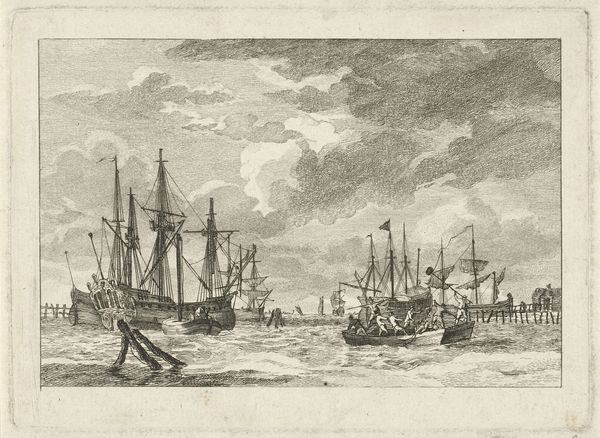
Dimensions: height 195 mm, width 125 mm
Copyright: Rijks Museum: Open Domain
Editor: So, here we have Dirk de Jong’s 1784 engraving, "Zeegezicht met de slag bij de Arosbaai op Madura," or "Sea View with the Battle of Aros Bay on Madura." The image is stark, with incredible detail despite the small scale. It depicts violence on a beach, with ships in the background flying what appear to be Dutch flags. What are your first thoughts looking at this print? Curator: It’s a potent reminder of the entanglement of maritime power and colonial violence. Considering it's an engraving, a medium often used for disseminating information, what narrative do you think it attempts to construct about the events at Aros Bay? Editor: It looks like the ships are meant to signify authority, almost looming over the figures engaged in combat on the beach. I guess the narrative being pushed forward is a victory for the colonizers, with the local people portrayed in disarray. But who was this image really FOR? Curator: Exactly. Understanding the print's audience is key. Who would have consumed this image in 1784? And how might their socio-political position influence their interpretation of this "battle"? Consider the role of the Dutch East India Company at the time. Did this image serve to glorify their actions, perhaps justifying colonial expansion under the guise of necessary conflict? Editor: So it's about constructing a specific viewpoint? That this "battle" was necessary or justified from a Western, colonizing perspective? It feels… propagandistic. Curator: Precisely. And engravings like this were powerful tools in shaping public opinion. Think about the economics of art distribution during this time; prints were easily reproducible and shared, shaping understandings across different social strata. What responsibility do artists and institutions have when portraying colonial conflict? Editor: That's something to consider. It definitely makes you question whose story is really being told, or, more accurately, sold to the public. It feels relevant to ongoing conversations around representation and historical narratives within museums today. Curator: Absolutely. Examining historical context reveals power dynamics often obscured by seemingly objective depictions of the past, revealing so much about societal perspectives then and now.
Comments
No comments
Be the first to comment and join the conversation on the ultimate creative platform.
